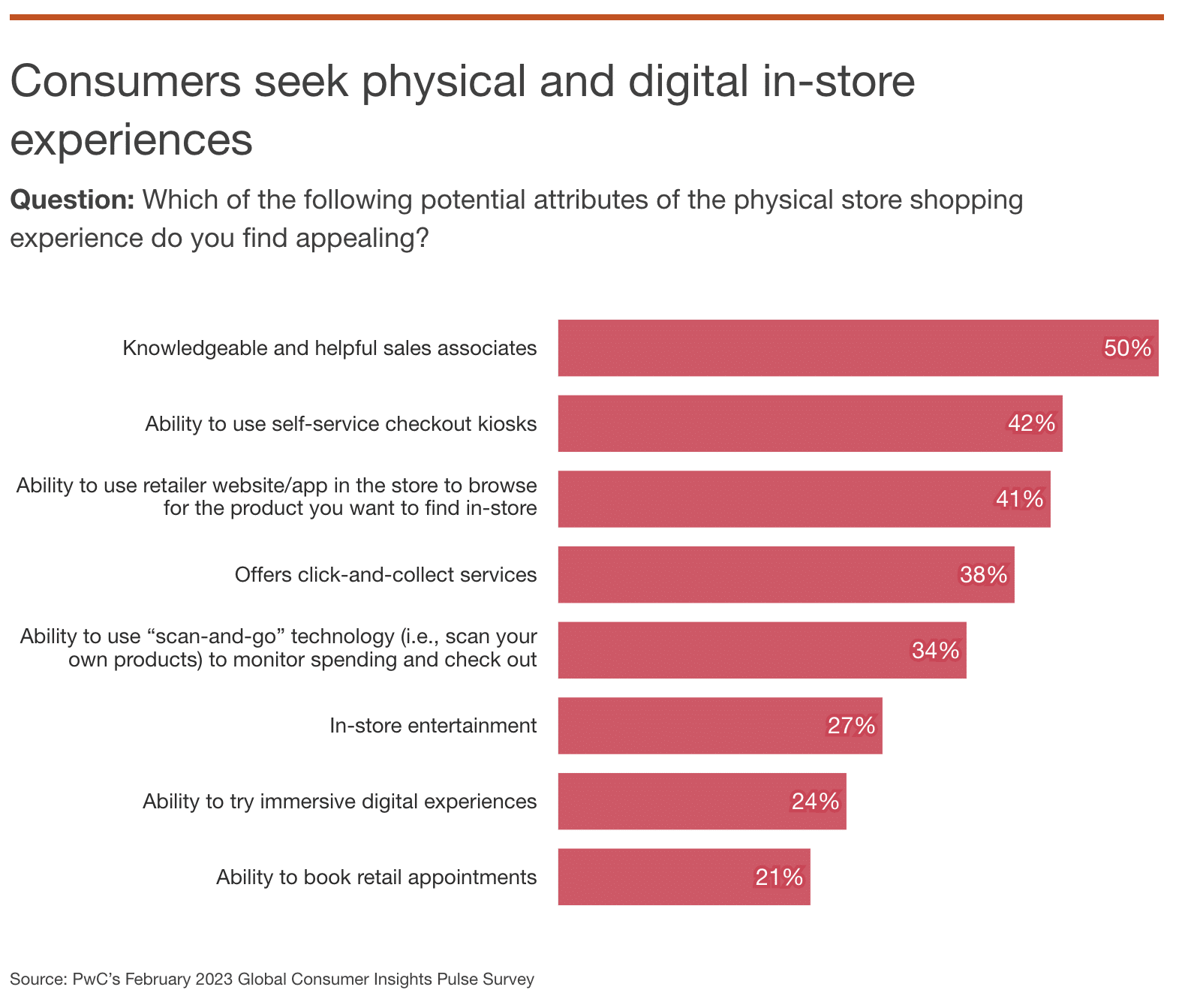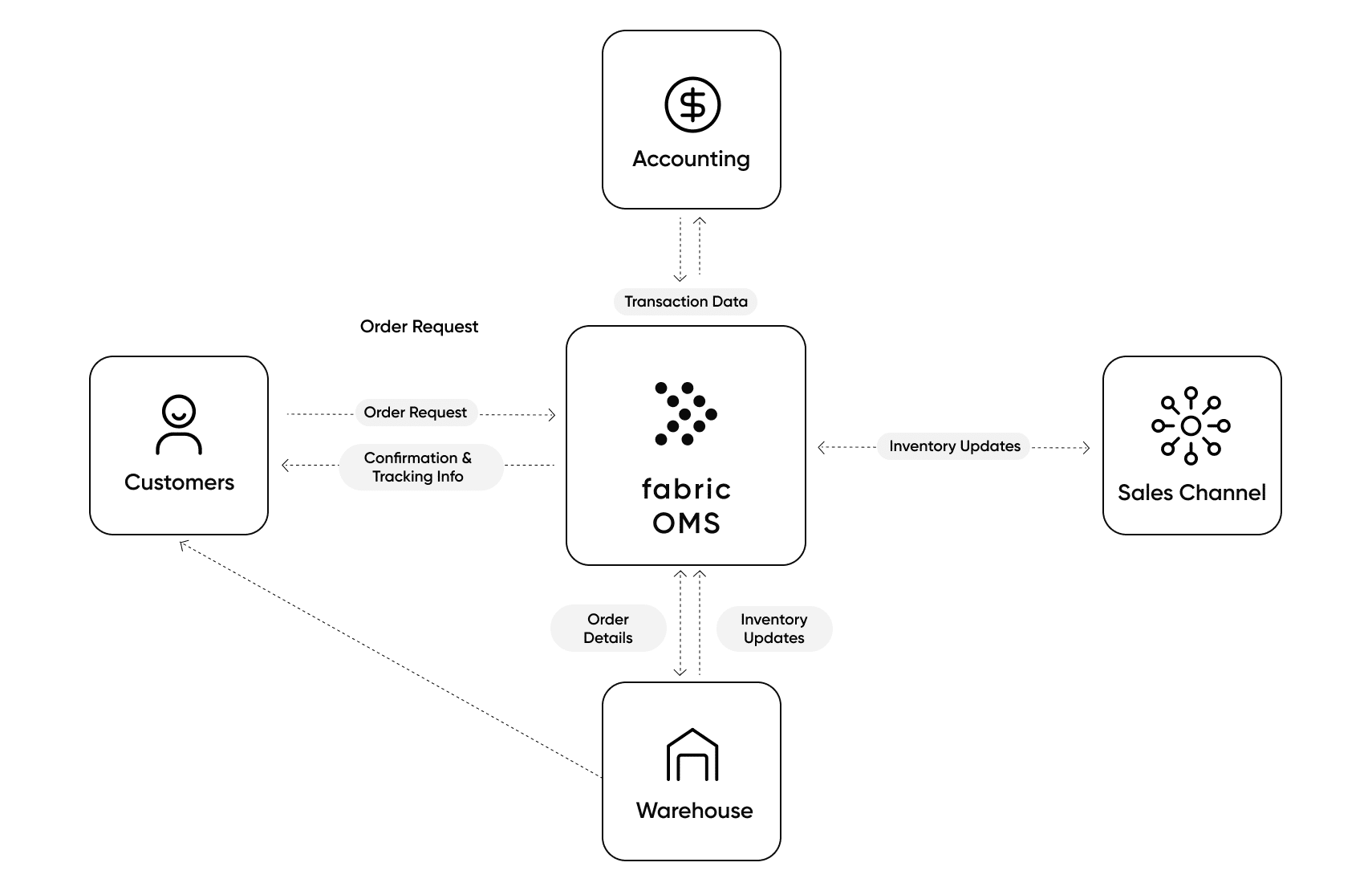OMS Software: 5 Must-Know Order Management Systems for Enterprise Retail

Enterprise businesses are turning to modern technologies that streamline the order fulfillment process, thereby improving the post-purchase experience and reducing costs.
An enterprise order management system (OMS) improves inventory accuracy by improving data synchronization quality using advanced integration features such as real time data updates, data centralization, and “true up” capabilities.
Distributed order management (DOM) systems enable retailers to manage fulfillment across channels and configure changes to the system and workflow self-service in the platform.
5 must-know order management systems for enterprise retail include fabric OMS, IBM Sterling, Kibo Commerce, Manhattan Associates, and Fluent Commerce.
In the world of e-commerce, expectations around improved customer service are rising—especially when it comes to the order fulfillment experience. Recent insights from a consumer survey conducted by PricewaterhouseCoopers (PwC) reveal persistent challenges faced by shoppers, with 24% reporting frustration due to out-of-stock products or longer than promised delivery times.
Meanwhile, Digital Commerce 360 found that online shoppers expect fast shipping (61%) and desire guaranteed delivery times (39%), and both impact conversions. In a separate survey, 88% of consumers said that they were willing to pay more at checkout so they could enjoy same-day delivery services.
Today, it’s not enough to offer faster deliveries without making every touchpoint and scenario in the post-purchase experience delightful. Consumers now expect quick and convenient options when it comes to their shopping experiences. This has led to the rise of omnichannel purchase journeys, with popular options like buy online, pickup in-store (also known as BOPIS or click and collect) and curbside pickup.
As a result, business leaders are investing in platforms to get the right products to the right customers, and at the right time. They are turning to modern technologies that not only streamline the order fulfillment process but also enhance speed and efficiency while reducing costs.
A growing need for OMS software
Order management system (OMS) software is a comprehensive solution that allows businesses to manage orders, reduce costs, improve efficiency, and – most importantly – deliver superior customer experiences.
However, not all OMS software is created equal. Data synchronization issues often cause retailers to run out of stock, and many platforms depend on skilled developers to make even minor changes.
Modern order management systems must offer unique and advanced features that enable both developers and business operators to configure their systems in a way that maximizes inventory accuracy. They also must offer capabilities for brick and mortar retailers to ship from store for on-time delivery, and react to exceptional scenarios where labor, locations, or inventory shortages come into play.
This guide will discuss how a modern, scalable OMS solution can help retailers streamline order fulfillment across all of their sales channels. Here is what we will cover in this article:
- Understanding OMS Software
- Key Benefits of OMS Software
- Must-Have OMS Software Features
- 5 Outstanding OMS Software Options for Enterprise Retail Brands
[toc-embed headline=”Understanding OMS Software”]
Understanding OMS Software
What is OMS software?
The order management system (OMS) is a single system to manage orders, inventory, fulfillment, and returns across all sales channels. It is software for order management that captures orders and provides a centralized interface to view and manage those orders. In addition, it connects to other systems to sync inventory and push order details across an e-commerce ecosystem.
What is a distributed order management (DOM) system?
A distributed order management (DOM) system is an OMS that employs order fulfillment logic (OFL), or rule-based mechanisms, to efficiently manage and optimize the order fulfillment process. The primary goal is to reduce fulfillment lead times, enhance customer satisfaction, and optimize costs for retailers. By automating order management, order routing, and enabling seamless omnichannel order fulfillment, DOM systems streamline and enhance the efficiency of the entire process.
How OMS software works
Facilitating order fulfillment is the primary function of the OMS. One of the most important functions is keeping real-time and accurate records of inventory throughout the supply chain. Without precise synchronization of information across all sales channels, retailers can frequently run out of stock, which could lead to suboptimal shopping experiences for customers.
Generally, the order fulfillment process follows the steps below:
- A customer places an order through a sales channel, creating the order in the OMS in real-time. Managing all customer orders in the OMS enables retailers to track customer order history and shipping and payment preferences.
- Once the order is confirmed and validated, the OMS will allocate inventory to fulfill the order.
- The OMS uses order details to route the order to the appropriate fulfillment location, typically a warehouse or store. It analyzes the fulfillment rules configured by the business, which are often based on attributes like stock levels, geographic proximity, and capacity. At the fulfillment location, the order is picked, packed, and double-checked for accuracy.
- Once the order is fulfilled, the payment is captured and the inventory is then moved from allocated to fulfilled. If there is a delay in the shipment, the customer receives a notification informing them of the delay.
- After the order is packed, it is shipped to the customer via third-party shipping software. The order triggers an event for an email system to send a confirmation email to the customer with the tracking information.
- Once the order arrives, the shipping carrier communicates back to the OMS that the package was delivered. The OMS triggers an event for the email system to send an “order delivered” confirmation email. This message includes customer service contact info if there is an issue.
- If a customer wants to return an order, the OMS software quickly processes a refund request. It then passes the information to the appropriate party to start the return process.
Common OMS software use cases
The order fulfillment process can be complex, especially if a business is large or sells through multiple sales channels. Before choosing OMS software vendors, retailers must consider their specific requirements and how they will use the platform.
Overselling prevention
Overselling prevention effectively eliminates checkout and post-purchase frustrations. Companies that lack accurate inventory visibility across channels can experience scenarios where customers place orders only to have them canceled later due to item unavailability. An OMS with real-time inventory visibility across physical and digital channels can prevent overselling scenarios and the canceled orders associated with them, ultimately reducing customer support tickets.
Ship from store
Another common use case is for companies that want to “ship from store”. By leveraging store inventory, retailers can minimize out-of-stock situations and expedite delivery times by shipping from the nearest store location. An OMS with configurable OFL can route orders and optimize shipping based on inventory priority. A comprehensive OMS provides store employees the tools to pick, pack, and ship orders from the store.
Buy online and pickup in-store (BOPIS)
BOPIS, or click and collect, has become popular for customers seeking convenience and flexibility. A modern OMS can handle the entire fulfillment process, including real-time inventory visibility, order routing, inventory management, and real-time updates, ensuring a smooth and efficient BOPIS experience for customers, while optimizing inventory utilization and driving foot traffic to physical stores.
Direct to Consumer (D2C) order fulfillment
With the rise of D2C business models, it has become critical for brands and retailers to deliver superior fulfillment experiences directly to customers. Below, KPMG provides an illustration of D2C as a percentage of all online sales for various countries:
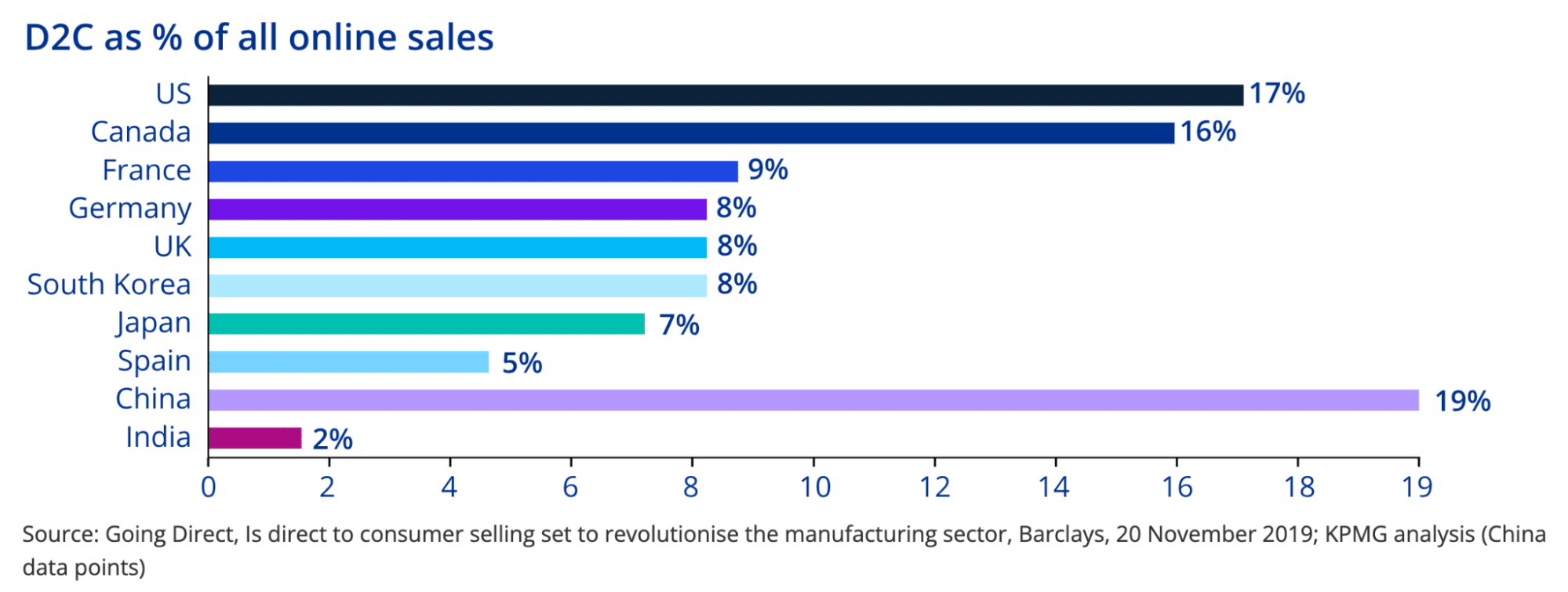
D2C order fulfillment enables D2C brands to seamlessly manage and process customer orders from start to finish. OMS software allows D2C retailers to optimize their order fulfillment operations, gain real-time visibility into inventory, and efficiently coordinate shipping and logistics.
[toc-embed headline=”OMS Software Benefits”]
OMS Software Benefits
Better inventory visibility
Taking control over inventory management is a key benefit to using OMS software. Businesses can know how much inventory they have or need at any given time and they can use the data to allocate inventory to optimal locations so that sales channels will always have access to stock.
This can drastically reduce the chances of running out of stock or selling stock that is unavailable. Furthermore, companies can use data to forecast demand, which limits the chances of overstocking products that take up valuable space in warehouses. A modern OMS can let customers know on the product detail page (PDP) that an item is running low or if it’s out of stock.
Optimized order management
Today, customers expect their online shopping experiences to be quick and flawless. From the moment an order is placed to when the product is received, OMS systems can streamline the order management process to improve the customer experience.
For example, an OMS with DOM capabilities can help manage and track orders, find the optimal path to fulfill orders using OFL, and allow businesses to offer flexible options like buy-online-pickup-in-store (BOPIS), ship-from-store, and ship-to-store. The faster you can fulfill your orders, the happier your customers will be.
More automation
Human error costs can quickly spiral out of control, especially for businesses that want to scale. What’s more, companies often struggle to allocate resources to tasks and opportunities that present the best ROI.
But OMS software can automate many functions. A centralized system reduces the number of errors in the order management process, which can free up staff to focus on what they do best: sell products and create superior shopping experiences for customers.
Improved customer experience
According to the Baymard Institute, the average e-commerce cart abandonment rate was 69.99% for 2022. Slow delivery times and extra costs for shipping, taxes, and fees were two of the top reasons cited.
OMS software streamlines order fulfillment so retailers can provide faster, more flexible, and cheaper shipping and delivery. Less errors and more transparency with order tracking can improve the overall purchasing process. By meeting the demands of customers, businesses can further strengthen brand loyalty, which can lead to repeat business.
[toc-embed headline=”Choosing the Right OMS: Essential Software Features to Look For”]
Choosing the Right OMS: Essential Software Features to Look For
Order management
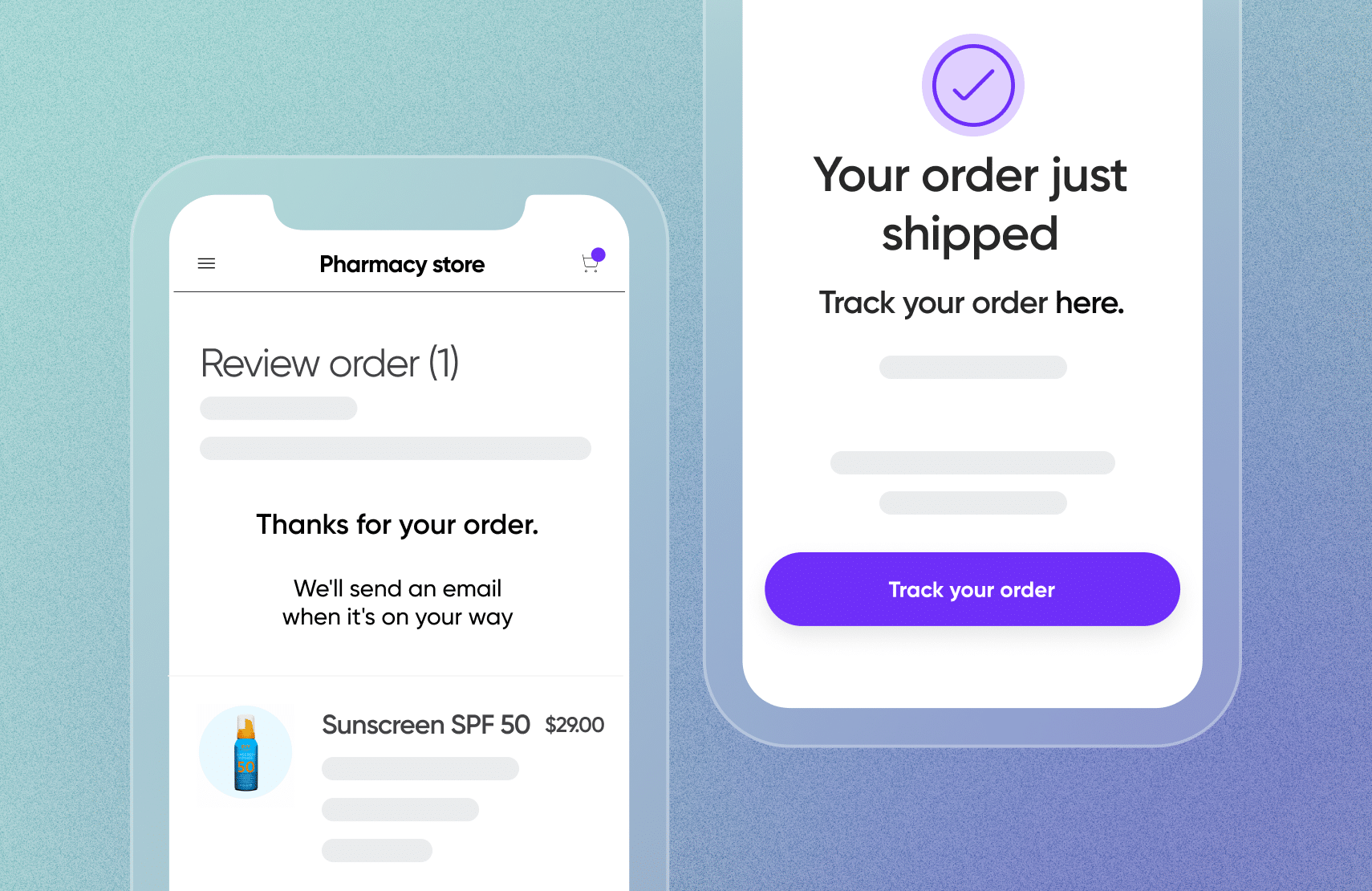
The right order management system should provide easy tools for the business to quickly make order management updates such as shipping dates or updates to order quantities.
OMS software should provide a user interface to track and manage customer orders. For example, retailers often need the ability to update expected shipping dates or add or delete items from an order before it is shipped. The order management system should provide easy-to-use tools for the business to quickly make these types of updates or provide easy integrations to third-party customer service applications (CS) where order updates can be made on behalf of customers.
Refunds and returns

Reverse logistics in retail are a major pain point for most businesses. However, an OMS solution can help simplify processes so returns and refunds are processed as efficiently as possible.
For example, businesses can begin offering “instant” or “immediate” refunds which can increase customer satisfaction by allowing an easy return and automated refund process. However, setting business rules for accepting and processing returns and refunds is important for the economics of reverse logistics to work. Any OMS should provide an easy way to set returns policies for customers to adhere to.
Inventory visibility
Every e-commerce operation needs to know what products they have in stock at any given time. An OMS should display inventory availability to give retailers a global overview of on-shelf, in-transit, and on-order inventory in real time and across the supply chain (i.e. distribution centers, stores, suppliers, etc…). A DOM system can display inventory by geographic proximity, availability at nearby stores, or network-specific availability by channel.
Additionally, available-to-promise (ATP) inventory is known as the projected amount of inventory a business has in stock that’s ready to sell and is not allocated for existing customer orders. An inventory availability storefront API can be used to show the exact amount of ATP inventory that’s available for customers to buy.
A bulk export function for inventory data is key to maintaining inventory synchronization between systems as well. Retailers should be able to schedule recurring exports to streamline processes and view import history. “True Up” is an OMS feature that can increase inventory accuracy by updating inventory data from one or many bulk import groups.
Inventory controls
Inventory controls provide the checks and balances to manage inventory. Beyond having the ability to categorize and organize inventory, a modern OMS can help businesses create custom attributes, set safety stock levels and low stock levels, and configure custom inventory position tags, such as on-hand, backorder available, and reserved.
Also, the ability to create and control inventory networks can allow companies to segment inventory and set aggregation rules by location, network, or channel. A business can compose inventory aggregation rules, create inventory subgroups and supergroups, exclude products or categories by brand or region, or configure logic by fulfillment methods (e.g. direct shipping vs. BOPIS).
Accepting backorders and preorders
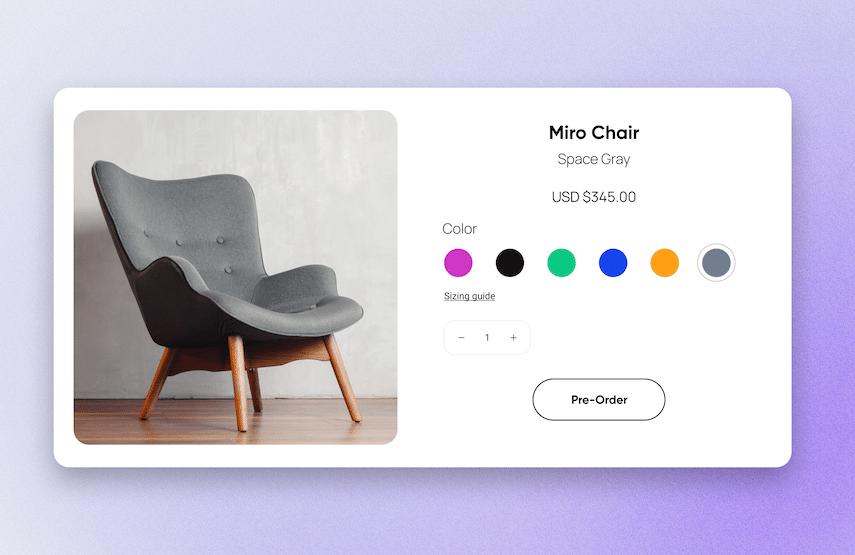
A key feature of modern OMS software is backorder capabilities.
Businesses never want to run out of stock. But when it happens, backorders allow customers to place an order for a product that is temporarily out of stock. OMS solutions that provide backorder capabilities can allow retailers to still capture sales and retain customers that would normally abandon their transactions.
Pre-order capabilities are important features too. Allowing a customer to preorder a product can help with demand forecasting and inventory planning for an upcoming launch of a product. Pre-orders can be great tools for building anticipation for product releases too.
Multichannel fulfillment

Multichannel fulfillment built into a modern OMS improves the online shopping experience for e-commerce customers.
For an omnichannel retailer, a DOM system is critical for managing complex business order fulfillment logic. Businesses today need to provide flexible fulfillment options to customers, which means that an OMS needs to support fulfillment methods for same-day delivery, buy-online-pickup-in-store (BOPIS), ship-from-store, ship-to-store, or direct-to-consumer (D2C), to name a few.
An OMS that offers the ability to stand up and update OFL is important for reducing delayed orders and the cost of shipping products. A software feature like inventory segmentation configures tags to assign inventory to specific customer segments like subscribers, new customers, or VIPs. Also, being able to prioritize picking locations from the closest facility in stock or by rank can increase fulfillment speed and efficiency. Finally, an inventory reservation feature can help businesses track the virtual quantities of inventory for a specific demand.
[toc-embed headline=”Additional OMS Software Features to Look For”]
Additional OMS Software Features to Look For
Integrations with key enterprise systems
The e-commerce technology stack includes tools and technologies that work together to optimize sales, marketing, customer service, order fulfillment and returns, payment processing, and more. Therefore, it’s important for an OMS to seamlessly integrate to your warehouse management system (WMS), enterprise resource planning (ERP) system, customer service application (CS), accounting system, and other parts of a modern technology stack.
Some companies use an ERP system to help with the order fulfillment function. ERP software can be used to manage accounting, procurement, project management, risk management and compliance, and supply chain operations, but it is not a substitute for a standalone OMS. Having a dedicated OMS can help businesses tackle some of the most difficult challenges with order management, with the added benefit of integrating together with other e-commerce applications through the use of APIs. APIs can be used to build custom connections to other systems, such as a pricing engine, a product information manager, or a dropshipping platform.
Management of supply chain complexity
Complex supply chains are becoming the norm in e-commerce. Between rising customer expectations for faster lead times, expanded products and services, and tailored experiences, enterprise brands are being pushed to support more unique orders across the retail supply chain. Today, managing supply chains requires more collaboration with partners, improved inventory management with suppliers, and greater visibility and control of every part of the supply chain.
Enterprise OMS software can tackle many of these issues. For example, today’s OMS solutions can integrate with multiple warehouses, route orders to optimal warehouse locations for fast deliveries, allow retailers to offer in-store pickups at brick-and-mortar locations, and more.
Multichannel order processing
It is also important to consider sales channels and how OMS software can help manage order processing. Each channel requires its own processes and connects with backend systems differently. If omnichannel selling is an integral part of a business, retailers can benefit from an OMS that will provide stronger, more robust APIs to connect different sales channels.
Automation
In order to optimize workflows and eliminate manual processes, businesses need to embrace automation. The workflows of an OMS can automate order fulfillment processes to improve efficiency and minimize errors. From receiving, to processing, to picking, packing, and shipping, manual spreadsheets should become a thing of the past with modern OMS software.
[toc-embed headline=”5 Must-Know OMS Software Solutions for Enterprise Retailers”]
5 Must-Know OMS Software Solutions for Enterprise Retailers
How do you choose an OMS? Enterprise omnichannel retail brands require enterprise-grade order management capabilities in order to handle complex fulfillment operations across multiple sales channels.
For larger companies, the goal is to ensure that all customers will experience a satisfactory and consistent process from order to delivery. Companies with intricate logistics operations and a higher volume of orders need the feature-rich capabilities of enterprise order management platforms that are offered by reputed OMS providers.
Here is a list of 5 notable platforms for enterprise brands today:
fabric OMS
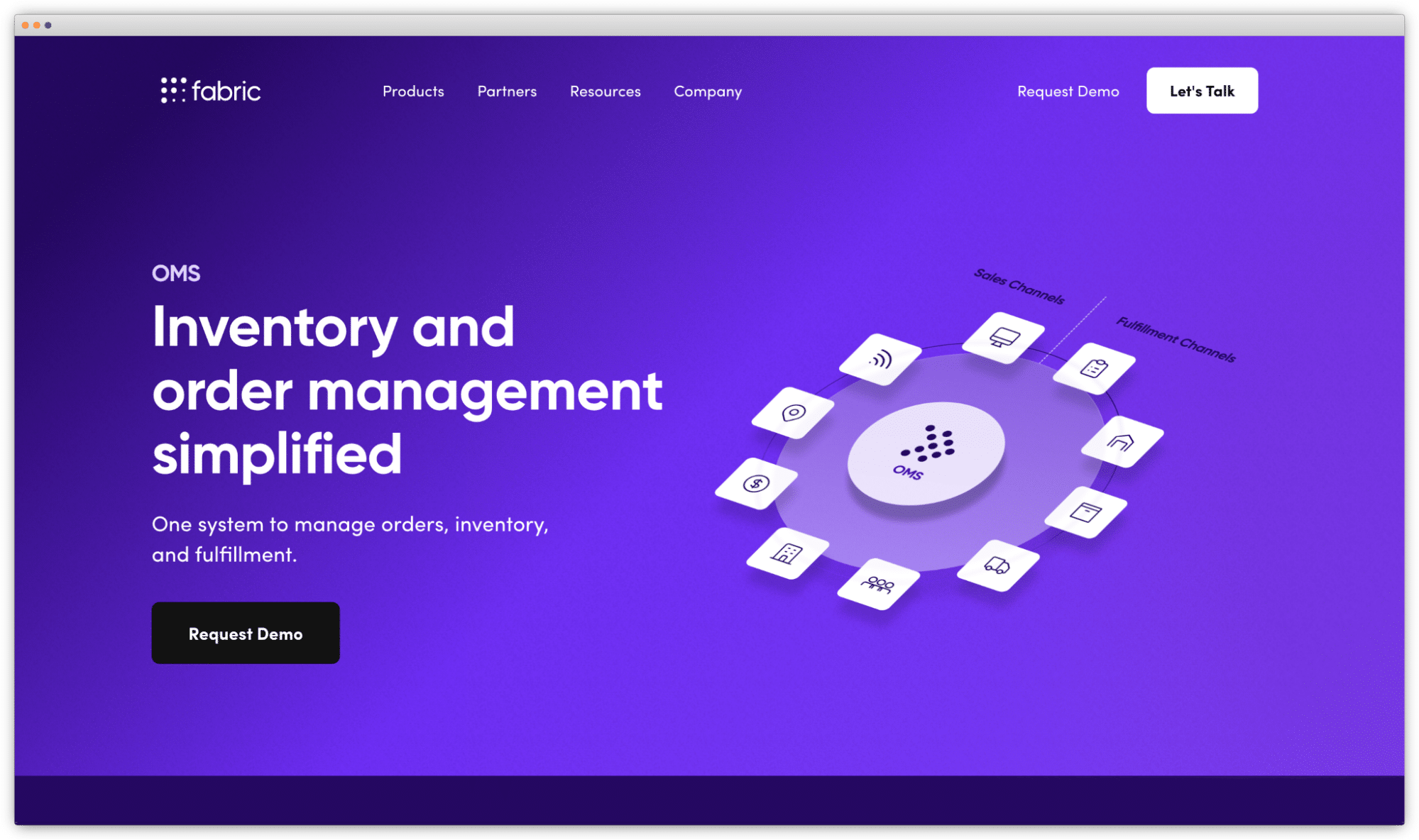
fabric OMS is a modern commerce platform built for the full lifecycle of commerce from merchandising to fulfillment, all fully configurable without the need for a developer.
fabric OMS is a distributed order management (DOM) system that is purpose-built for enterprise retail brands to help deliver superior fulfillment experiences to their customers. With new state-of-the-art, multi-tenant cloud architecture built on Amazon Web Services (AWS), fabric’s modular and scalable order orchestration software has become more powerful, flexible, and cost-effective than ever before.
fabric OMS is built to support modern distributed commerce models, including buy online pickup in-store (BOPIS), ship-to-store (for store pick up or replenishment), and store fulfillment (as mini distribution centers). Not only does it provide enterprise-level inventory visibility with network aggregation, but teams can stand up and update order fulfillment logic without writing code, which reduces the strain on developer resources.
With fabric’s order management solutions, retailers can consolidate their order lifecycle to a single interface from legacy systems, orchestrate new fulfillment experiences for customers, reduce out-of-stock rates, and free up engineering resources to focus on other business-critical tasks.
IBM Sterling
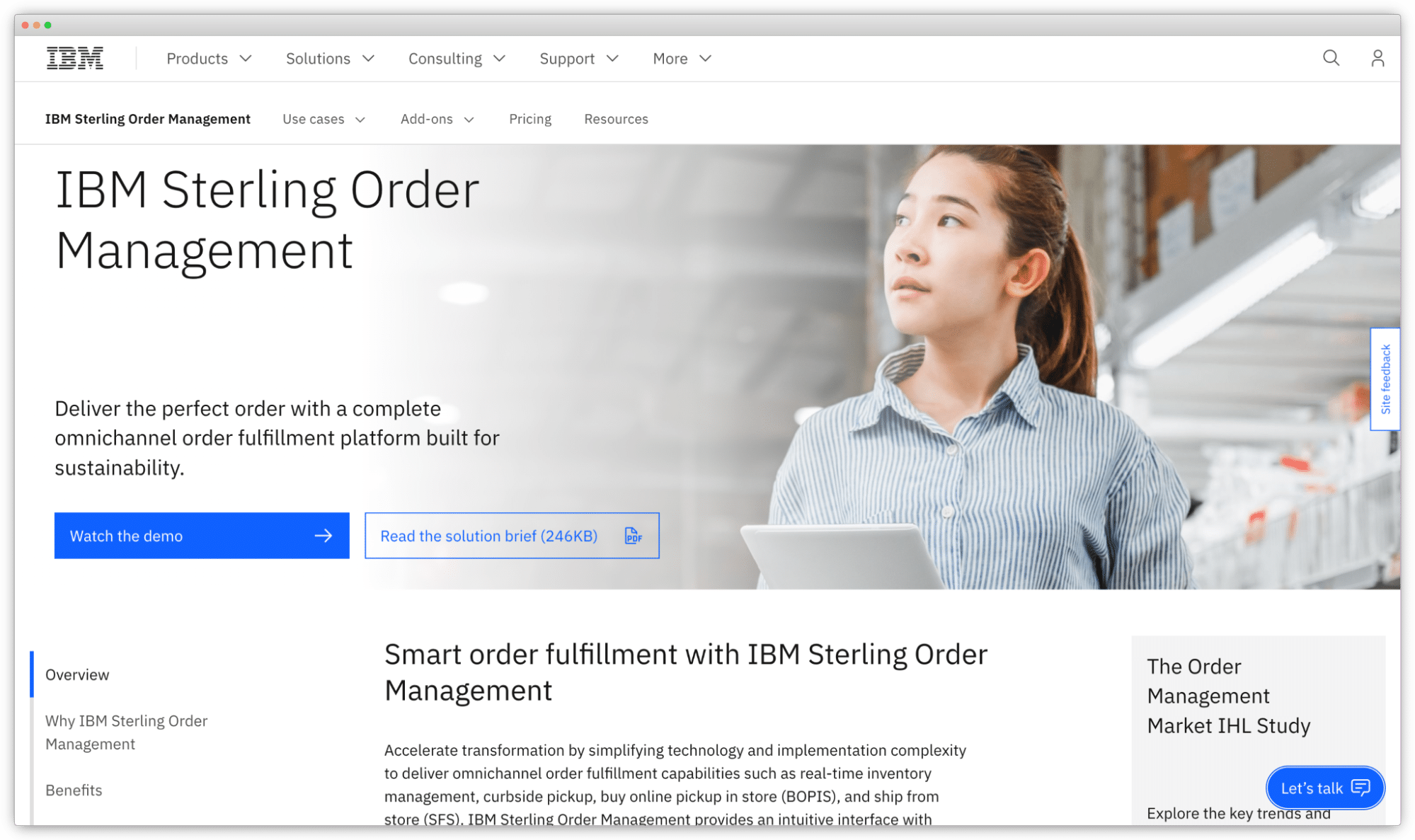
IBM Sterling’s OMS is best for enterprise brands with access to large technology budgets and large development teams. It is an order management platform that provides centralized, real-time visibility into, and management of, inventory, orders, and fulfillment across the network. IBM Sterling is offered as cloud, hybrid cloud, or on premises (containers or traditional) solution models to enable flexible integration, although their on-prem solution dominates their case studies.
IBM Sterling’s comprehensive Standard Edition commands a higher price premium for larger data center infrastructure, and its high degree of configurability accommodates changing business needs. It provides a comprehensive feature set, allowing businesses to control multi-brand order execution, manage inventory segmentation and allocation, gain access to advanced sourcing, scheduling, and optimization rules, and more. Additionally, users benefit from a well-established partner ecosystem.
On the downside, IBM Sterling has struggled to keep pace with the pace of innovation in order management and has been described as challenging to use. Product version upgrades are challenging, requiring the help of large development teams. According to a report by IHL, implementations can be expensive and complex and can take around 4-5 months, which places IBM Sterling in the middle of the pack for OMS solutions.
Kibo Order Management

Kibo order management is a modern order management platform that provides all the necessary capabilities for order management, inventory visibility, and fulfillment orchestration. The software has been named a Strong Performer by Forrester and has been described as a “best fit for organizations seeking a commerce-first approach to order management.”
However, Kibo OMS is yet to mature in its distributed order management capabilities (such as fulfillment automation and inventory segmentation). DOM enables merchants to aggregate the supply side and configure complex OFL to match the demand from multiple channels, lower costs, and maximize speed.
Furthermore, customer service issues and value for money are important concerns that have been raised in the past. Users have found that reporting capabilities are very manual and pulling stats on a given metric is not easy. Lastly, Kibo grew through several acquisitions which haven’t all worked out. The company recently sold its personalization business to focus on its core e-commerce and order management products.
Manhattan Associates Active Omni Order Management
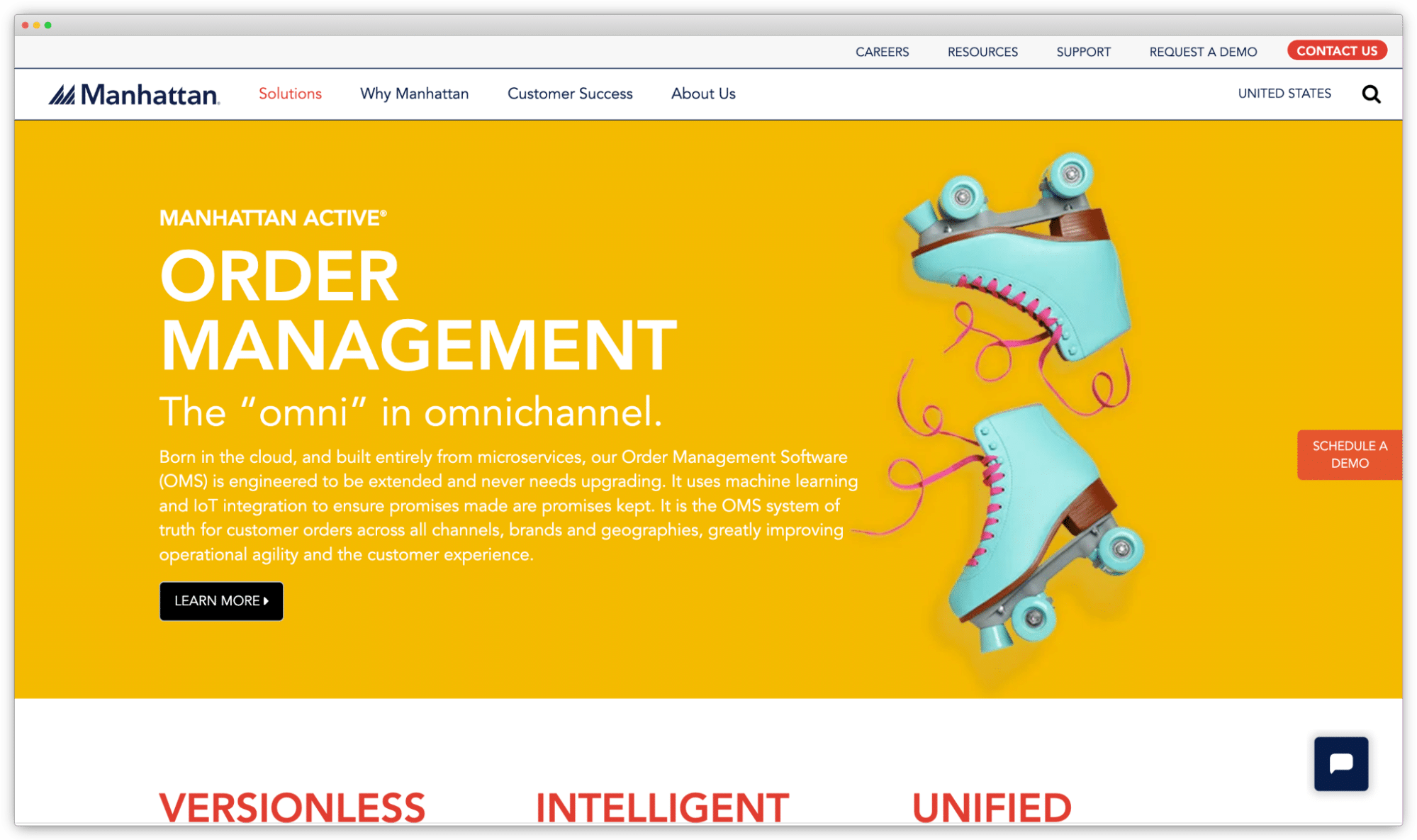
Manhattan OMS has been described as “the most comprehensive solution in the market” and is a top choice for enterprise retailers with complex needs and ample resources. Customers appreciate the strong support they receive and believe that the solution is worth the investment, although the software is expensive.
Manhattan OMS boasts a feature-rich platform and has a strong portfolio of customer case studies, showcasing its capabilities. The mature solution is known for its reliability and low downtime, ensuring uninterrupted operations. It benefits from a robust partner ecosystem, further enhancing its capabilities and integrations.
However, Manhattan’s OMS capabilities are more than some businesses need. While businesses can choose only the modules they require, they need to purchase multiple modules and additional add-ons to gain full order management functionality. This significantly increases the total cost of ownership of the software. Meanwhile, long implementation cycles may result in implementation and deployment delays too.
Additionally, Manhattan OMS pushes for implementation and ongoing development to be handled by their Professional Services group, which makes it expensive and limits the involvement of third-party system integrators. In summary, Manhattan offers a feature-rich order management system that is best fit for enterprise retailers with complex business needs, a big technology budget, and a large development team.
Fluent Commerce
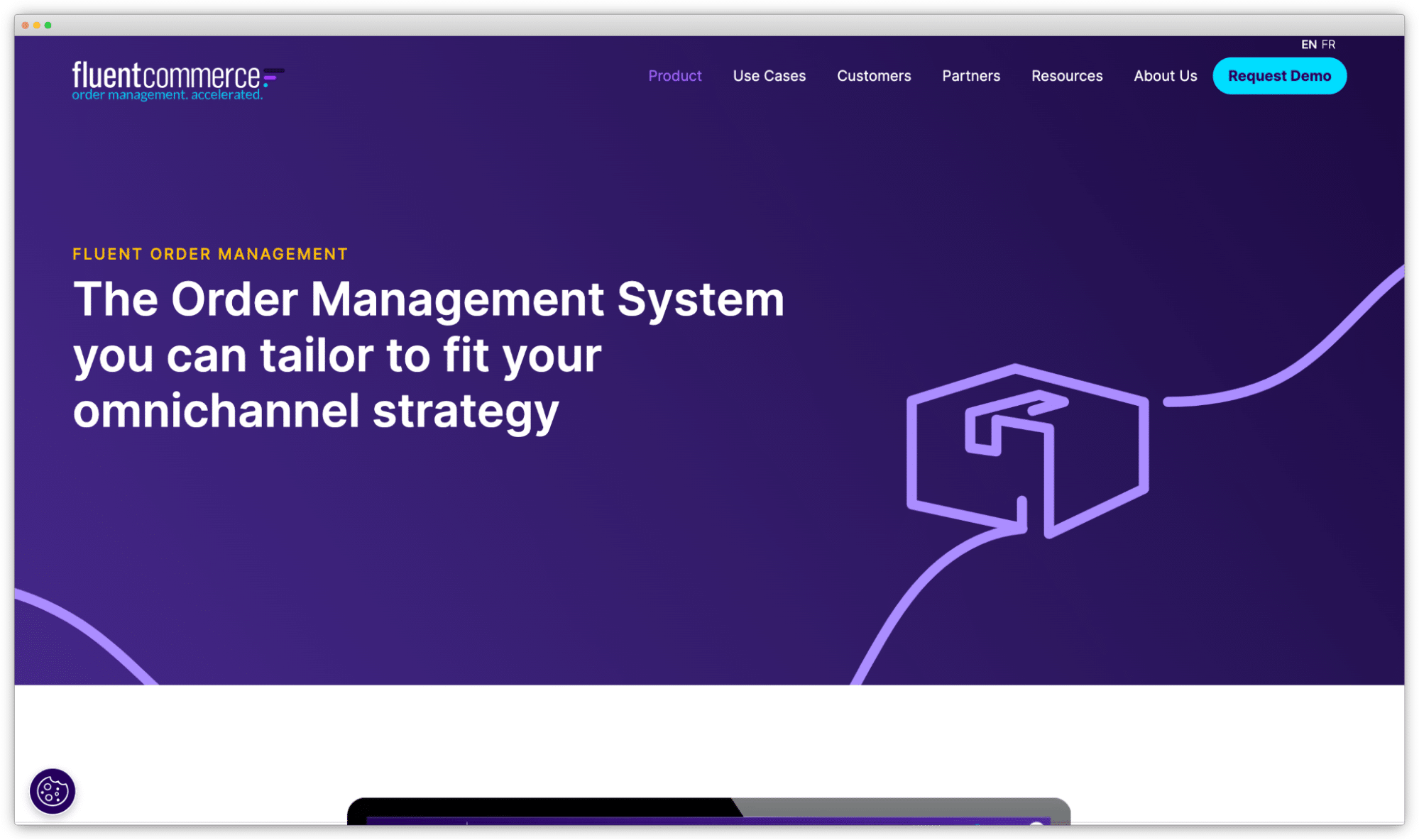
Fluent order management offers advanced inventory and order management across digital channels and stores. Their OMS is a cloud-native, multi-tenant platform with an API-first approach that lets retailers adapt business processes and decisions to manage fulfillment locations and networks of locations.
The system offers the fulfillment options customers expect, but also keeps the processes that make your business unique. Fluent provides accurate and near real-time inventory availability across multiple locations, order orchestration, fulfillment optimization fulfillment location management, in-store pick and pack, customer service, and reporting.
That being said, Fluent Commerce is a single-product company that lacks the backing of a full e-commerce platform. Modularity is also a drawback since the OMS doesn’t sell and deploy pieces of their system—specifically inventory—while modular platforms like fabric do.
Additionally, some important features are not available out of the box, and the software has been described as “overwhelming” and “confusing” for businesses without dedicated resources or extensive technical expertise.
[toc-embed headline=”fabric OMS is an Enterprise-Ready Order Management System”]
fabric OMS is an Enterprise-Ready Order Management System
fabric OMS is a powerful, API-first, cloud-native, and modular application that’s purpose-built for enterprise retailers.
Boasting fulfillment orchestration technologies like distributed order management (DOM), advanced order routing, network aggregation, and preorder/backorder inventory management, It empowers businesses to strengthen their inventory accuracy, optimize order fulfillment, and streamline omnichannel order processing.
If you’re interested in learning more about fabric OMS or would like to schedule a demo of its latest features and functions, get in touch with us here.

Product @ fabric. Previously @ EMAAR NEXT, Groupon, and NorAm International Partners.
